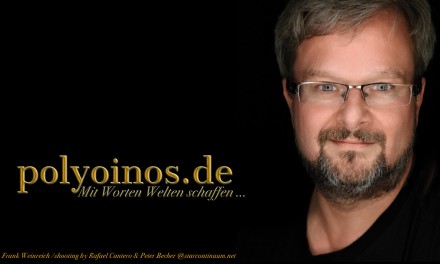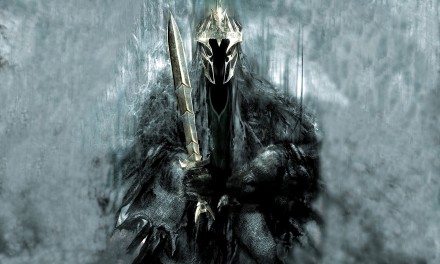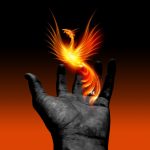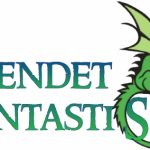Poetry ist the blossom and the fragrancy of all human knowledge.
(Samuel Taylor Coleridge: Biographia Literaria)
Those who know poetry whence poetry is,
and the need that man has for song,
or know any one of the fifty branches of magic,
have little time to waste on such things as science.
(Lord Dunsany: The King of Elfland´s Daughter)
Metaphysics of Myth
The Platonic Ontology of “Mythopoeia“
© Frank Weinreich

There are some places in Tolkien´s fictional work which express the ontological beliefs of the author and in which his personal convictions about creativity and human (sub-)creational powers can be described and identified.
“Mythopoeia” is a powerful as well as an enigmatic poem which can be described as the creed of Tolkienian ontology.1 In wording and metre “Mythopoeia” recalls romanticism, whereby particularly John Keats´s “Lamia” may come to mind. Regarding content one is on the other hand also led to Classical antiquity, since the poem shows didactic qualities and ambitions like Peri Physeos by Epicurus or Lucretius´ De rerum natura, both of which were textbooks on natural sciences. This impression is amplified by the subtitle and the dedication Tolkien gave to his poem.2 What is the meaning of this mix of romantic speculation and scientific statements found in two very differing poetic ancestors, and what can be derived from it regarding Tolkien´s fictional work? A first look shows the history of “Mythopoeia”, and we see that the entrance to the Professor´s ontological beliefs opens with a dispute between friends.
I
Humphrey Carpenter reports the reason why Mythopoiea was written in the first place (Biographie, 169pp).3 According to Carpenter, Tolkien had a heated discussion with Hugo Dyson and C.S. Lewis one night in September 1931. The topic: Tolkien and Dyson tried to enlighten Lewis about the true meaning of myths. According to Lewis himself, he was a theist at that time but still had not found his belief in the Christian faith (Lewis 1998, 275, cf. also chapters 14, 15). During the discussion Lewis is reported to have said that myths – the focal myth discussed that evening was the Christian myth – were lies although they might be of the highest artistry (therefore Tolkien spoke of “lies, breathed through silver”). Interestingly myths, according to Lewis – an author who later wrote Perelandra and Narnia, works which are overloaded with myth – are lies, no matter how artfully they might be wrapped up.
That caused Tolkien to intervene at once. He denied the opinion of myths being lies and is reported to have said, as early as on that occasion, that myths convey truth.4 In the weeks following this evening “Mythopoeia” came into being as a condensed and artistically embroidered version of the arguments Tolkien held against Lewis’s accusation of myths being lies.
That was the occasion that led to Mythopoiea being composed six years before On Fairy Stories, the famous statement of the relation between human artistic creativity and reality, which indeed must be read with and against “Mythopoeia” for a full understanding of Tolkien´s convictions about creativity and ontology.
II
Some remarks on verse, metre and other facts are in order. “Mythopoeia” is neologism,5 a creation stemming from the Greek words “mythos” and “poeisis”. “Mythos”, of course, means myth6 while “poiesis” stands for acting as well as creating. Creation in the case of “Mythopoeia” is used in an artistic sense, and this artistic sense is related by Tolkien to the human ability of sub-creation, which he outlines in On Fairy Stories, though there he uses it more carefully and presents it with a lesser ontological status than in “Mythopoeia” (OFS 25), six years before writing OFS. “Mythopoeia” therefore means myth-making, and the title taken together with the dedication to Lewis – see above: “To one who said that myths were lies …” – depicts the program of the poem, which was composed to explain what myth-making is and thereby show the ontological status of myths in general.
The poem consists of 148 lines in 12 stanzas of differing length. It is written in so-called “heroic couplets”, rhyming pairs of lines in iambic pentameter:
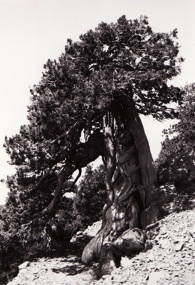
You look at trees and label them just so,
(for trees are ‘trees,’ and growing is ‘to grow’)
(lines 1f.)
The origin of the heroic couplet is unknown. In English poetry it was used at least from the 14th century onwards. Geoffrey Chaucer was the first poet to make extensive use of it. In the 17th century its usage reached its peak and it became the dominating metre in English dramatic poetry. Its best known examples are the works of John Dryden and Alexander Pope.
The formal structure of “Mythopoeia” therefore differs from the poetry usually found in Tolkien´s works. Clive Tolley supposes that the reason for that lies in the assumption that Tolkien not only wanted to answer C.S. Lewis with “Mythopoeia” but tried to go much further and write the poem as a critique of Alexander Pope´s “Essay on Criticism” and “Essay on Man” – by using the same literary form as Pope to correct the weltanschauung in Pope´s poems into what Tolkien believed to be true (Tolley 82-84). Pope composed his two poems in heroic couplets (Pope 1711, 1734), which made it fitting to answer him using the same verse form. But a possible conflict between Pope and Tolkien is not the topic of the following considerations on “Mythopoeia”.
III
In the context of the following considerations the content of the poem is much more important than verse and metre. Nonetheless it will not be necessary to examine the poem line by line. The intentions and the meaning of “Mythopoeia” can be derived from a close look at a selected number of stanzas and lines, as is done in the following.
The poem itself does not begin at once. The dedication to C.S. Lewis7 is not part of the poem, although it clearly belongs together with it since it stands as an outline of what is to come – a refutation of the claim that myths are lies. Before the first line Tolkien inserted a subtitle “Philomythus to Misomythus“, marking the poem as a message from one who loves myths to one who is at least sceptical about myths, but may even be hostile to them and the stories they convey. It is very unlikely that Tolkien wanted to characterise Lewis in earnest as someone hostile towards myth, even though “Mythopoeia” dates from a time when neither Perelandra nor Narnia were even thought of. Tolkien only points to Lewis´s incredulity concerning truth in myth. The prefix “mis-” means “wrong” as well as “bad” and is used, I think, in both senses by Tolkien. Lewis did not want to mark myths as defective, neither in a moral nor in an aesthetic sense, when he said that they were lies. The reference to silver, through which myths might be breathed, even points to the aesthetic value and possibly the moral value myths can have, as artistic delight or morally inspiring tale. Like Tolkien, Lewis was simply referring to their truthfulness, which he denied but Tolkien emphatically defended.8 Seen in this light it is more likely that Tolkien did not address Lewis as Misomythus but instead thought of the materialists, people who believe in (natural) sciences and empirical knowledge only. This sort of knowledge is discussed in the first stanza.
It is Misomythus, the materialist, about whom the poet is talking when he begins with the lines “You look at trees and label them just so, / (for trees are ‘trees’ and growing is ‘to grow’)“ and so on. This is the materialistic world view pictured in poetic terms, and in particular the world view of the empirical sciences: looking (i.e. examining) and labelling. The materialist and the empirical sciences recognise phenomena in the perceptible world and classify them according to an explanatory system which attaches labels like ‘tree’, ‘earth’, ‘globe’ and so on. Even a star, once a celestial phenomenon which was the topic of countless mythical and romanticising interpretations, is now nothing more than “some matter in a ball” (line 5), which runs on fixed trajectories, purposelessly and dumb (i.e. “inane”, 7), which might better be translated as mindless, in the sense of de-spiritualised. What Misomythus sees is a universe with unbreakable natural laws, inescapable and without transcendental purpose.
Line 8 appears to be of special interest in this context; there physical matter in this universe is described with the words “where destined atoms are each moment slain“ – so even atoms have an inescapable fate which threatens to destroy them at any moment. My interpretation is that line 8 refers to the model of atomic structure established by the Danish physicist Nils Bohr in 1913. This model points out the rules of atomic properties and indeed allows a view that describes atoms as ‘fated’, though in physical terms that is, of course, nonsense. In 1931 the basics of thermodynamics were well known, as was Bohr´s model. An educated man with a wide range of interests like Tolkien surely was familiar enough with it to embed, as I think, the picture of fated atoms in “Mythopoeia” in the way he did. One can assume that Tolkien was familiar with the model of atomic structure and that he knew that an atom cannot easily be destroyed or ‘slain’. Why then did he choose the picture of slain atoms? That atoms can indeed be destroyed might have been an idea that in 1931 was under discussion among theoretical physicists such as Bohr, Fermi or Heisenberg. But it is highly unlikely that Tolkien had an idea of the then merely theoretical concept of nuclear fission. I think it is much likelier that Tolkien here in line 8 refers to a pre-empirical concept of atoms derived from the ancient records of Leucippus and Democritus. They were the first thinkers who in ancient Greek had developed the idea of atoms being the basis of all physical matter. And while it is unlikely that Tolkien was aware of the most recent speculations of theoretical physicists of his time, it is on the other hand very probable that he, especially as philologist, knew the ancient Greek writings of presocratic philosophers, which had been completely reconstructed by 1930. But in “Mythopoeia” a connection between ancient beliefs and modern nuclear physics is established, if only to the better known basics laid out by Bohr and not to upcoming theories of nuclear fission. The term “destined atoms” therefore stands for two concepts. First, it stands for atoms as the basis of all matter and all material things the way Democritus and Leucippus assumed, who, of course, could not have the slightest idea of the theory of relativity and the equivalence of energy and matter. Second, it stands for the modern concept of atoms as described by Bohr in his model of the structure of atoms. The connection to modern physics can be found in the word “destined”, which relates to the structure of atoms in the form of a nucleus and orbiting electrons. Ancient thinkers on the other hand had excluded atoms, for them the basis of all matter, from fate and fatal developments; they were convinced that atoms were indestructible (cf. Capelle 291f, 397p) and aimless as well as purposeless (cf. 405). But according to “Mythopoeia” this foundation can be destroyed. How? Why? That remains unknown in the first stanza, so we have to go on.
The second verse reports the development of time, cosmos and earth, “from dark beginnings to uncertain goals“ (line 12). Interestingly the concept of evolution is mentioned without critique here: in lines 15 and 16 it says “an endless multitude of forms appear, / some grim some frail some beautiful, some queer“ which according to lines 17 and 18 stem from one source, “one remote Origo“. This can only be read as direct refrence to the end of Darwin´s Origin of Species, which last words say: „from so simple a beginning endless forms most beautiful and most wonderful have been, and are being, evolved“ (Darwin: Origin of Species, 458). That is nothing less than a poetical short version of the concept of evolution. But while these four lines do not contain criticism, the next line states without doubt that God created earth and the life on earth: “God made the petreous rocks, the arboreal trees“ (line 19). Lines 20 and 21 then state that God also created the wide universe (“tellurian stars”) and man himself. At first glance this means that there is no evolution whatsoever. But from a conemporary point of view the concept of creation poses no problem. Evolution and belief in God are not exclusive. Even without the aid of a questionable concept like the so called ‘intelligent design’, findings on evolution and various religious beliefs are compatible.9 But back in the first half of the 20th century the mention of God´s creatorship in the same context as evolutionary theory can only be read as an objection against evolutionary theory.10 Therefore a critical remark on the findings of modern natural science must be noted when reading verse 2 of the poem.
Stanza three then for the first time provides a hint of the superior role that language, names and the giving of names might have for man himself, particularly man in his role as witness of the existence of all things (“trees are not trees until so named and seen“, line 29): trees are not trees before someone gives them a name (“named) and acknowledges (“and seen”) them as trees henceforth. Acknowledging and naming can only be done after an observer has come into being who possesses the ability of conscious observation and language as grounds for the naming – mankind. Man, who does not become man until he possesses language and the ability to speak, as is said in line 31 (“who speech´s involuted breath unfurled“). Man discloses himself as man only at the point when he uses speech: speech which is but a faint echo and cloudy picture of the world and everything in it, not in the sense of a recording or a photograph. It is not easy to unfold what is hidden in this meaningful third stanza. And since it is so important for the whole poem, we will have to examine the stanza and line by line.
1. Trees become trees only when they are acknowledged for what they are and, which is even more important only when they are given the name “tree”. I think that tree in this line stands for every phenomenon of the living world, and perhaps also of the non-living world, since in line 19 tree and rock were equated as products of a creational act. That can be carried further to the assumption that, if this is right, the whole world and everything in it comes into its true being only when it is given a name. That is a prerequisite which could not happen before man appeared and used his special ability – speech. A convinced materialist must find this nonsensical since for him world, universe and matter are given things which possess reality independent from any observer. But in a non-materialistic, in a dualistic world view, which is definitely the one Tolkien held, this is in no way nonsensical but makes all the sense one can possibly think of. Why? Because the process of acknowledgement by sentient beings, and foremost the act of name-giving, is a first strong hint for the existence of a second level of being. One can imagine this also as a second plane of being in the ontological sense, besides the material universe which then would be counted as the first plane of existence or the Primary World, to use a Tolkienian term.11 The second plane or level perhaps can be found in the characteristic circumstance that this second level is a level which specifically depends on man and his ability to think and speak: trees become real trees when a sentient being acknowledges them and gives them the name which is the necessary condition for becoming real trees. In terms of the two differing planes or levels of existence – the material level of the real world and the second level where objects and beings are united with their designating names – there are two trees. The first one is the evolutionary product descended from a chaotic soup of carbohydrates and amino acids; it is one of the “forms” mentioned in line 15, “an endless multitude of forms appear”. The second tree, the real tree, is the one which has been observed and which carries a name – tree. But in the Primary World the first cannot be distinguished from the second tree – not through touch, nor by biochemical and microscopic analysis. So where is it that the true being of the second tree exists, the true being of the real tree? That is a question we will put later in this essay at Plato´s feet.
2. Line 31 then tells about the name-giver, albeit in a poetical way which is not readily comprehensible. A form of language which is difficult to understand discloses him as what he is (“who speech´s involuted breath unfurled“). This disclosure means that through his faculty of speech man becomes man. That is a topic which is familiar to every philologist and philosopher, that is the ancient Aristotelian zoon logon echon, the animal that has language at his disposal. From ancient times the ability to speak was held to be the “differentia specifica” which distinguishes man from all living beings.
3. The following lines can be read as a first characterisation of language. It is not important whether man or language are meant in line 32 when it is said that speech is a “faint echo and dim picture of the world“ because man and speech are held to be identical in the motif of the zoon logon echon. Then, why is it that speech is thought of as dark and faint in its ability to reproduce the phenomena of the world? The poem insists that language is “neither record nor a photograph“ (line 33). One explanation comes to mind. If speech and the declaration of names were nothing more than a photograph, they would also be nothing more than one of the “multitude of forms” line 15 presented. But this is not what words do – that is the unambiguous statement from line 33. What words do is instead circumscribed in line 32 – they produce a faint echo and dim pictures of reality, thus providing an imperfect portrait of the world. This means that they portray another world than the one which a tape-recorder and camera would picture, hence another world than that of pure matter. That can then only be the world (or universe or plane or level of existence) which is the home of the tree which received its name, the one mentioned in line 29. So this is the home of the real tree, the tree which, through receiving a name, is designated as the true tree, far more than an assembly of woody fibers sprung from matter. Otherwise the poet should have given further explanations.
What we find in lines 29 and 30 is the belief that there must in fact be a level of existence besides the mere material level where our bodies reside and where the deficient instruments of empirical sciences are used for the scrutiny of ‘reality’. And this spiritual level must have something to do with language, with the human faculty of speech and thought. This makes the assumption most likely that the Aristotelian zoon logon echon is in possession of a key which allows him to enter the second level.
The poem goes on to describe processes of thought. Lines 39 to 44 say that man digs out foreknown things from memory and thus produces spiritual ideas and thoughts. Especially the “elves” with their extraordinary artistic abilities and “dark secrets”, secrets which probably also stem from faërie as do the elves, are topics of this remembrance. Two things are important in this context.
First the word “foreknown” from line 39. The knowledge is not of the kind that man has learned but possesses even before subjective experiences. That indicates the possession of knowledge from before the beginning of his life on earth, since experiences begin from conception onwards. Assumptions of this kind are not unknown and reach down into history at least to Greek antiquity. Ancient Greek philosophy would not use the term “digging” (line 39) but instead speak of birth and of the art of a midwife who assists in giving birth, in this image not to a child but to a memory, to foreknowledge. That is the so-called Socratic method, which helps (re-)produce the remembrance of a knowledge with which men are born and which they only need to remember. Socrates´s role, then, was to help give birth to these things like a midwife. The memories are incarnated in man and can be known anew, if man begins to remember them. The concept of remembering incarnated and immortal truth is explained in detail for the first time in Plato´s Phaedo. But where does the knowledge Socrates and Plato postulate come from? It comes from another plane of being, from the world of ideas, which, according to Plato, is in an ontological sense the level where the true being or the essence of all things resides.12 So we here find another reference to the transcendental plane or world (of ideas, as Plato would have it).
Furthermore these lines provide the first indication of the special role art and creativity play. What does man remember from foreknown knowledge? The elves and their looms and forges (lines 42 – 44). Those are the same elves about whose ‘magic’ Tolkien was later to write in a famous letter to Milton Waldman: “its object is Art not Power, sub-creation not domination and tyrannous re-forming of Creation” (L, 146). The elves and their forges and looms, which, according to “Mythopoeia” work their art in the heads of man, serve as a metaphor for art and the worth of art and creativity, which man remembers. And it should be noted that art is equipped with “great power“ (line 41).
Stanza 4 then describes in beautiful and poetical words the magic one can also recognise in the material world if one sees it with elvish eyes, which, with regard to the letter to Waldman, translates into observing the world with the eyes of an artist. Stanza 5 talks about man in the order of things in our world. He is fallen from grace, but God has not given up on him. Instead he still grants him wisdom, he has just to be capable of recognising it (lines 55 – 58). He is man, sub-creator and he refracts the white light in order to combine it anew in countless variations.13 And this ability has not ended with the fall. Still man is required to practise his powers as sub-creator: “We make still by the law in which we´re made“, it says in line 70, with which stanza 5 closes. Stanza 5 is the strongest link to On Fairy Stories, which Tolkien was to write 6 years later and which is rightfully brought into close connection with “Mythopoeia”, the scholarly article and the poem forming two sides of Tolkien´s view of art.
Stanzas 6 – 9 tell of the perils of the Primary World and make clear that evil is a fact: “of evil / this alone is dreadly certain, evil is“ (lines 79f.). The latter is a thought which a materialist would find hard to believe because a metaphysical evil is meant, a force which Tolkien later in Middle-earth will embody in Melkor/Morgoth. But a force that is also a constant threat to our lives and souls in the Primary World. It is the purpose of the myths to warn against this evil. People who are aware of this and hold on to their courage are blessed (verse 8). Especially blessed are the ones who raise their voices and tell about evil, perils and the rewards of courage in mythical stories: “blessed are the legend-makers with their rhyme“ (line 91). Line 92 then again hints at the transcendental spiritual plane, saying, that the “legend-makers“ are telling the truth though they are not reporting scientific facts since they speak of “things not found within recorded time“. In all humbleness Tolkien then in verse 10 expresses his wish to be allowed to sing with the bards for once in order to also raise his voice like the blessed legend-makers. Well, this was in 1931 and we can say that this wish was definitely granted.
Stanza 11 is of special interest because of the picture it shows of the natural sciences. Line 119 speaks about “progressive apes”, which is a dig at the theory of evolution and its founder Charles Darwin, which Tolkien presumably felt to be first of all an insult to the belief that man was created as an image of God. More important for the understanding of “Mythopoeia” and Tolkien´s stance on the sciences is the abyss that gapes before the apes, i.e. man; which means it gapes before progress and technological advancements. It is well known that Tolkien was very sceptical about technological progress. But technology depends on scientific findings, and therefore the question arises as to what Tolkien thought of science?
Attacks on science are not as easy to recognise as are Tolkien´s objections to technology and modernity, of which he once said that it was “Mordor in our midst” (L 165). Still, it is only consistent to assume a critical position also towards the pure sciences, perhaps even to other branches of scholarship since for example the Positivism of Auguste Comte likewise stands in opposition to the view of man that Tolkien sketches in “Mythopoeia” (and elsewhere) and it also is part of the success of technocratic societies, just as the invention of flight by Daedalos led to the great aircraft that carried the bombs in World War II (cf. L 88). Also in Middle-earth some signs of hostility towards scientific thought can be traced. When Gandalf reports the betrayal of Saruman, he also tells about the changing of his white cloak into a multicoloured cloth – a kind of refraction of the white light that Newton discovered and which marks an important point in scientific progress (cf. Vanderbeke 146).14 Another lead can be found in the portrayal of Fëanor as a Faustian character who puts his craft above all other things. This makes it important also to note the dig at Darwin in line 119.
Of special interest is line 126 before the poet paints the impressive pictures of the iron crown and sceptre. Here, I think, we have another hint of his relation to science, though quite hidden this time. Line 126 says the poet refuses to “denot[e] this and that by this and that“ with no special reference to a particular fact. This means, I think, that the poet refuses to use the basic approaches to scientific understanding: induction and deduction. To denote something by another thing and vice versa stands for the reasoning that obtains or discovers general laws from particular facts or examples, induction, or for reasoning the other way round, when conclusions are drawn from general principles to particular cases, i.e. deduction. Together with experiment and observation, induction and deduction are the basic principles of discovering new findings like “a star´s a star, some matter in a ball“ (line 5) and “destined atoms“ (8); they, and with them the whole corpus of scientific thinking and empirical sciences [research?], are the basis of all sciences.
The principles of induction and deduction were first fully developed in Aristotelian logic (cf. Hankinson). Tolkien would not be the first to criticise Aristotle – who began his Metaphysics with the words “all men desire to know” (980a21) and who believed that his set of principles and syllogisms could indeed lead to such knowledge (981b25-27) – for disenchanting the world and eventually allowing the rainbow to become unwoven. Aristotle was often attacked this way, directly or indirectly, by critics who attacked the principles which are owed to his epistêmê: for example, Coleridge, Years, and Keats. “Philosophy will clip an angel´s wing“, John Keats says in “Lamia”.15
The suspicion that the philologist Tolkien seems to have been hostile to sciences is growing stronger. But why are his opinions hidden? Could it be that Tolkien, an Oxford professor, was a member of the scholarly community and he did not want to discredit them openly? Maybe. But another reason, I think, was that he was not in the least opposed to knowledge, not opposed to acquiring understanding and gaining wisdom. Tolkien was searching and researching all his life, and so he can only have objected to certain approaches to knowledge. Maybe the critique of science in “Mythopoeia” is hedged in because he was trying to differentiate. Another reason for his formulations is, of course, due to the poetic form of the whole argument.
But how great, then, is the terrain that knowledge can cover? What is it that man can come to know? Tolkien has shown what he objects to, he has shown what a myth is and that myths can convey truth, even though they are but faint and dim truths. Also human creative powers, even when they become ‘Elvish’, can show only reflections of truth. This is the point where an old image of thought springs to mind – faint pictures, dim sounds, reflections? Does not that remind one of Plato´s Cave?
According to “Mythopoeia”, so far the transcendental second plane cannot be brought onto earth. And it stays this way. Lines 131 – 136 in the last stanza make it clear that the true essence of all things can only be experienced on the second plane – though even that not with certitude (“perchance the eye may stray”, line 131) – which in the poem is then equated with Paradise (131). In Paradise man´s eye now has the chance “to see the day-illumined, and renew” (133), thereby leaving the triteness of the earthly light behind him. The formulation is also reminiscent of Plato; it takes up a picture from the allegory of the sun. There the sun, an object that provides the brightest light, is equated with the idea of good – a good that is necessary to view the truth that can only be seen in the brightest light (Republic 508a-d). Following the allegory of the lines (509d – 511a), the possible view of truth depends on the angle at which sunlight shines upon the objects of knowledge. Line 133 is reminiscent of the Platonic parables of sun and lines. But more important is line 134: the day – illuminated and renew[Again, something is strange here.] – there (on the other plane!) shows “from mirrored truth the likeness of the True”16 – this means objective knowledge. This view makes it possible to look on the blessed land as it is, “made free”, a liberation which then extends to the spectator.17
What is it that the poet and reader are “made free” from? The mistaken assumptions of an empiricism which does not allow other modes of acquiring knowledge.18 The important point is that it is possible in Paradise to renew the sight of truth, because “renew” again takes up the topic of remembered, ‘Socratic’, foreknowledge which was mentioned above. Therefore the key terms of verse 12 are “renew”, which refers to knowledge gained from the second plane, and “mirrored truth”. Mirrored truth is again a Platonian picture. It refers to the allegory of the cave, the most influential idea of Plato´s philosophy (Republic 514a-515c). The parable tells the story of people who are chained inside a cave. They are looking upon a wall before them, unable to turn around. They can only see shadows on the wall and hear sounds originating from outside the cave. The shadows are faint, the sound is dim, both are but a reflection of the real world outside the cave. These people will never come to know reality but only experience incomplete reflections if they are not freed (or free themselves), stand up and look at what is really outside their cave. The meaning of the parable is that the real world, the only world which the materialist believes in, only allows us to see reflections from the second plane, just like the reflections the prisoners in Plato´s cave can see and hear. The possibility “[to] see that all is as it is“ (lines 135f.) exists only on the second plane, in the Platonic world of ideas, in the “Mythopoeian Paradise”. Even the liberation in Paradise – “all […] as it is, and yet made free“ – connects “Mythopoeia” to Plato since the view of truth, which man experiences by leaving the cave, constitutes an act of liberation.
IV
What are the most important points of “Mythopoeia”? For Tolkien there is something wrong with an exclusively materialistic world view. But observing the world as it appears there is something which touches man (“nerves that tingle touched by sound and light“ it says as early as in line 22). With this first indefinable tingling the realisation of something deeper begins, which in the end points to another plane or level of existence, a plane which transcends our physical world. The importance of this plane, as we can deduce from the critique of the material world, lies in the assumption that in it things appear as they really are, perhaps best described in Greek as “kath auto”, the essence of a given thing which Kant called the “Ding an sich”.19 This is especially true for everything belonging to knowledge of the religious kind. But man cannot enter this plane, at least not directly and unmediated while living. But words can mediate between the Primary World and the transcendental plane. Words can transport inklings of the deeper truth, they can be the “blaze of light in every word“ that Leonard Cohen postulated in his song Hallelujah (Cohen, lines 20f.). And these inklings can be found in myths, which therefore cannot be lies. Myth is then depicted as “poetic imitation linked with the original light (as Tolkien perceived it)” (Chen 2007, 79). But myths are not told in professorial circles, possessed of Positivism, in Vienna and in their Cambridge lectures, but by poets who remember their Elvish crafts and whose creativity proves that there are many more things one can speak of than the contemporary philosopher believes possible.
What do these things mean in philosophical terms? It is quite easy to summarise that: the beliefs and expressions which make up “Mythopoeia” are pure Platonism! The whole poem is a (very) short version of the theory of knowledge developed in Phaedo, Phaedrus and The Republic because that is what Platonic ontology is about: dualism, the belief that knowledge is to be found in the light (of reason),20 the assumption that whoever is searching for knowledge only in the material world looks upon the walls of a cave, seeing nothing but mere reflections of what really is going on while the authentic ‘things-in-themselves’ are hidden behind their backs. Not until man gets up, turns around and leaves the cave is he able to see “from mirrored truth the likeness of the True“ (line 134). For Tolkien the situation is even more dramatic than it is for Plato, because he sees mankind not just looking at the walls of a cave but standing before an abyss. It is the abyss of modernity, including modern science, that leads to the conclusion: “I will not walk with you progressive apes, / erect and sapient. Before them gapes / the dark abyss to which that progress tends“ (lines 120 to 122).
Of course there are a number of possible objections to what I have said. For example, one could argue: ‘He was of the Christian faith, a true Catholic. Plato´s thoughts could not have had this importance for him.’ Or: ‘It is well known that Tolkien, while composing “Mythopoeia”, was heavily influenced by Owen Barfield´s Poetic Diction.’ To this I can only say – both are right … in a sense; certainly the Christian faith was much more important for him than Plato´s speculations on metaphysics, and Barfield´s Gnostic anthroposophy was perhaps more appealing to him than ancient Greek book lore. Gnostic disparaging of the material world would have affected him more than the quiet irony of Socrates, I think. But to understand theories and beliefs one has to examine the sources they stem from in order to understand what the theories and beliefs mean and what their agents and followers see in them. The source of Gnostic beliefs, the source of anthroposophical theories and the bases of developed Christian theology are Platonic and depend on Plato´s writings21 and dialogues, they are ingrained with Platonic thought. A famous dictum of the philosopher Alfred North Whitehead says that all philosophy is but a footnote to Plato´s teachings.22 In a sense that is right, and “Mythopoeia” is a witness to it.
What should one make of it? Theory of ideas and second plane of existence?
Creativity and sub-creation? First of all it is speculative and can be nothing more until God or the second plane prove their existence by direct intervention. These are questions of faith and belief, which, by the way, is also true for Plato´s metaphysics. My aim was not to attack or defend the speculations described in this article but to explain what stands behind “Mythopoeia” and to remind Tolkien´s readers that the roots run deep and that you have to follow them in order to gain an understanding of Tolkien´s convictions.
(Frank Weinreich Bochum05/07)
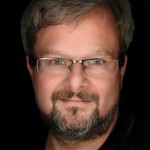 Frank Weinreich studied philosophy, communication sciences and politics in the early Nineties and holds a PhD in philosophy from the University of Vechta. He has worked as an independent scholar, freelance author and editor in Bochum, Germany since 2001. His interests focus on ethics, bioethics, media ethics, technology assessment, education, new media, fantasy and science fiction, myths and mythology, and, of course, the works of Tolkien. He has published numerous books, articles and essays, including a well received Introduction to fantasy literature (Famtasy. Einführung. Essen 2007). He is co-editor of Hither Shore, the Scholarly Journal of the German Tolkien Society, and co-editor of Stein und Baum, a German source for fantasy literature and works on fantasy. He can most easily be contacted through his professional homepage www.textarbeiten.com or via his private Tolkien –Site, which at the moment carries more than forty articles, essays and stories on Tolkien and Middle-earth: www.polyoinos.de/tolk_stuff.
Frank Weinreich studied philosophy, communication sciences and politics in the early Nineties and holds a PhD in philosophy from the University of Vechta. He has worked as an independent scholar, freelance author and editor in Bochum, Germany since 2001. His interests focus on ethics, bioethics, media ethics, technology assessment, education, new media, fantasy and science fiction, myths and mythology, and, of course, the works of Tolkien. He has published numerous books, articles and essays, including a well received Introduction to fantasy literature (Famtasy. Einführung. Essen 2007). He is co-editor of Hither Shore, the Scholarly Journal of the German Tolkien Society, and co-editor of Stein und Baum, a German source for fantasy literature and works on fantasy. He can most easily be contacted through his professional homepage www.textarbeiten.com or via his private Tolkien –Site, which at the moment carries more than forty articles, essays and stories on Tolkien and Middle-earth: www.polyoinos.de/tolk_stuff.
1 To understand the poem in this sense, it is essential to keep in mind the famous essay On Fairy Stories, which points in the same direction as “Mythopoeia”, though the poem uses all the poetic emphasis which a scholarly paper like OFS would not allow itself.
2 “Mythopoeia” is dedicated to C.S. Lewis with these words: “To one who said that myths were lies and therefore worthless, even though ‘breathed through silver’.” Furthermore the poem is subtitled “Philomythus to Misomythus” e.g. lover of myths to sceptic of myths (line 0; from here on the count is “You look at trees and label them just so” = line 1, and so on).
3 What happened that night was also confirmed by Walter Hooper, Lewis´ biographer, who gave Joseph Pearce in an interview an account of the evening which tells the same story (Pearce 57p).
4 A conviction which also sheds light on the status of Tolkien´s own writing: “In expounding this belief in the inherent truth of mythology, Tolkien had laid bare the centre of his philosophy as a writer, the creed that is at the heart of The Silmarillion.“ ( Biography 147). Hooper speaks of Tolkien describing myth as a “way of conveying truths“ (Pearce 58).
5 The OED cites an example from 1927. The adjective “mythopoeic“ is first attested in 1846. More significantly, there is an example from 1875 from the philologist Sayce, in The Principles of Comparative Philology, a publication that Tolkien is more than likely to have read.
6 Myth does not need to be translated, otherwise an excursion would become necessary which would not be appropriate for this article and in which in greater detail explanations about myth, a word which originally just meant “narration“, and its variety of meanings would have to be discussed. For explanations on myth and its meanings cf. Schneidewind and Weinreich Fantasy, Chap. 3, Chen 69 – 83.
7 The dedication of the published versions of the poem does not name Lewis explicitly and only says “To one who said …“. But Carpenter mentions a manuscript that also carried the remark “For C.S.L.“ (Carpenter, 170).
8 As Carpenter and Hooper stated, cf. footnote 4.
9 Cf. the documentation Zum Kreationismus und zur Theorie des intelligenten Designs of the Evangelische Zentralstelle für Weltanschauungsfragen and my own introductory summary of intelligent design and creationism: www.polyoinos.de/philstuff/intelligent_ design.html.
10 A short summary of the problems of evolutionary theory in the context of history can be found in Weinreich Evolution.
11 A certain problem with levels, planes or worlds arises in the special case of Tolkien´s ontology. As a man of deep Christian faith he believed in an afterlife and in a spiritual level of existence. One could call the material plane, on which we live together as humans, the real world or universe. But that would suggest that the spiritual level is not real, that it might be a fancy of imagination. But at least for Tolkien, and it is his ontology we are discussing here, the spiritual level was as real as the material world, perhaps in a sense even more realistic than reality and in every case more important than the world where our bodies reside. Tolkien was also the author who in On Fairy Stories coined the terms of Primary and Secondary Worlds, meaning the ‘real’ world on the material plane in the first case and sub-created worlds of literary fiction in the latter. But we cannot just use these terms, since the Primary World is the real world, certainly, but the spiritual level, where trees get their names from (see below), is not a Secondary World but something else (when counted the spiritual level would be prime; or perhaps ‘proto-‘, as would be fitting for the following involvement with Platonic thought). Secondary Worlds in Tolkien’s sense are fictional worlds whose process of creation is inspired by God´s act of creating the Primary World and therefore has a connection to the spiritual level, but must not be confused with it since all it receives directly from there is an inspiration, mediated through the agency of the author, a man or woman of the Primary World. These explanations notwithstanding I will use the term Primary World for purposes of comprehensibility in some places in the following text, when the physical world is meant.
12 Plato postulated a clearly divided dualistic cosmos. He was convinced that there is a second level of being, a superior level which exists beside and independent of our reality (whereas our reality does not exist independent of the second level, from which it receives all form as Aristotle would have said). The superiority of the second level is grounded in its being the home of the essences of all things, i.e. the ‘ideas of things’, where a circle can really be a perfect circle as it never could in the material world. The theory of ideas forms the core of all Platonic philosophy and cannot be discussed in the current paper. A good introduction to Platonic thought can be found in the papers which compose The Cambridge Companion to Plato, edited by Richard Kraut.
13 Thereby “mak[ing] manifest fragments of original truth“ (Flieger 47).
14 Footnote 13 mentions Flieger and her approach of understanding the refraction of light as discovery of “original truth“ beyond the material world (cf. Flieger 46p). That is a plausible reading in the context of lines 61 – 64 of “Mythopoeia“. In the context of Saruman´s appearance before Gandalf I nonetheless think that the refraction of light refers to natural sciences and their “artificial intervention into nature“ (Vanderbeke 146), which in fact is what Saruman is about to do in the following course of the Ringwar..
15 John Keats: “Lamia”, line 234; the argument is directed at Isaac Newton. “Philosophy“ in Newton´s time, and it is Newton´s Philosophiae Naturalis Principia Mathematica that Keats refers to, was a term which in the first place meant all natural sciences, not the discipline of philosophy as part of the corpus which form the humanities we think of today. Therefore it is the sciences, the emiprical world view, which cut off the wings of the angel. The Romantic poets in opposition to this claimed that it was their works which described eternal truths (cf. Coleridge 179). They put their works in opposition to the empirical and mathematical knowledge of the scientists and believed that their findings and inspirations were superior. This is shown for example in the poem “Wenn nicht mehr Zahlen und Figuren” by the German Romantic poet Novalis (Georg Friedrich Philipp Freiherr von Hardenberg, 1772 – 1801; the title translates “When numbers and figures no longer …“) which ends with lines that state, after the belief in scientific truth has been wiped out, “then “before a secret word, the whole wrong being will vanish“ (“dann fliegt vor einem geheimen Wort / das ganze verkehrte Wesen fort“; Novalis Zahlen, lines 11f.):
16 Note the capitalized “True“ – meaning the ‘one truth’ or essence of being which on earth, with its different modi of reasoning and observing, cannot be found.
17 The lines 131 to 136 in context: “to see the day illumined, and renew / from mirrored truth the likeness of the True. / Then looking on the Blessed Land `twill see / that all is as it is, and yet made free:”.
18 Tolkien certainly does not go so far as to object to any empiricism. But he objects to a certain kind of empiricism which rules out all other forms of gaining knowledge.
19 “Ding an sich” or “kath auto”, also known in Latin as “per se”, is roughly translatable as “thing-in-itself”, a key term of the Critique of Pure Reason, which is defined in the Transcendental Aesthetics (Kant 78).
20 The light of reason is, of course, a topic taken from the Enlightenment which Romanticism and poets like Keats or Yeats, in whose succession I have put Tolkien in this paper, were opposed to. But they, like their Romantic German counterparts in philosophy – J.G. Fichte, the brothers Schlegel, F. Schleiermacher – also clung to reason, albeit for their own purposes and finding reason in speculative thought. Educated metaphysical speculations are far from being unreasonable, as Plato and Aristotle have proved.
21 Only Plato´s dialogues are extant, and even in the case of some of these it is disputed whether Plato really wrote them. It is known that Plato, like Aristotle (of whom only writings are extant while the dialogues he is said to have written are lost), also published theoretical papers, of which not one is known nowadays but to which the Gnostic thinkers of antiquity might have had access.
22 “The safest general characterization of the European philosophical tradition is that it consists of a series of footnotes to Plato. I do not mean the systematic scheme of thought which scholars have doubtfully extracted from his writings. I allude to the wealth of general ideas scattered through them“ (Whitehead, Ray 39).
Bibliography:
Aristotle. Aristoteles´ Metaphysik. Hamburg: Meiner 1989.
Barfield, Owen. Poetic Diction. A Study in Meaning. Middletown: Wesleyan University Press 1973.
Capelle, Wilhelm (ed.). Die Vorsokratiker. Stuttgart: Kröner, 1968.
Carpenter, Humphrey. J.R.R. Tolkien. A Biography. London: Allen & Unwin, 1977.
Carpenter, Humphrey (ed.). The Letters of J.R.R. Tolkien. London: Allen & Unwin, 2000.
Chen, Fanfan. Fantasticism. Poetics of Fantastic Literature. The Imaginary and the Rhetoric. Arbeiten zur literarischen Phantastik, Vol 1. Frankfurt/M. u.a.: Peter Lang 2007.
Cohen, Leonard. “Hallelujah”. The Essential Leonard Cohen. [Audio-CD] Track 13.
Coleridge, Samuel Taylor. Biographia Literaria. Or Biographical Sketches of My Literary Life and Opinions. London: J.M. Dent & Sons, 1965.
Evangelische Zentralstelle für Weltanschauungsfragen. “Dokumentation: Zum Kreationismus und zur Theorie des intelligenten Designs.” Zeitschrift für Religion und Weltanschauungsfragen 9/07 (2007). 337 – 342.
Flieger, Verlyn. Splintered Light. Logos and Language in Tolkien´s World. Kent, London: Kent State University Press 2002.
Hankinson, R. James. “Philosophy of Science”. J. Barnes (ed.). The Cambridge Companion to Aristotle. Cambridge: Cambridge University Press 1995. 109 – 139.
Kant, Immanuel. Kritik der reinen Vernunft. Werkausgabe, Vols. III and IV. W. Weischedel (ed.). Frankfurt/M: Suhrkamp 1968.
Keats, John. The Poetical Works of John Keats. London: Warne 1884.
Kraut, Richard. The Cambridge Companion to Plato. Cambridge. Cambridge University Press 1993.
Lewis, Clive Staples. Überrascht von Freude. Giessen: Brunnen, 1998.
Novalis [Georg Friedrich Philipp Freiherr von Hardenberg]. Werke. München: Beck 2001.
Pearce, Joseph. Tolkien: Man and Myth. London, HarperCollins, 1998.
Plato. Sämtliche Dialoge. Otto Apelt (ed.). Hamburg: Meiner, 1993.
Pope, Alexander. Essay on Criticism. 1711. [URL, cited 30.4.007: http://www.gutenberg.org/dirs/etext05/esycr10h.htm].
ders. Essay on Man. 1734. [URL, cited 30.4.2007: http://www.gutenberg.org/dirs/etext00/esymn10.txt].
Rehn, Rudolf. Platons Höhlengleichnis. Das Siebte Buch der Politeia, gr.-dt. Exzerpta Klassika, Band 23. Mainz: Diethrichsche Verlagsbuchhandlung, 2005.
Sayce, Archibald Henry. The Principles of Comparative Philology. London: Trubner 1874.
Schneidewind, Friedhelm. Mythen und Phantastik. Essen: Oldib 2008.
Shippey, Tom. The Road to Middle-earth. Boston, New York: Houghton Mifflin, 2003.
Tolley, Clive. “Tolkien´s “Essay on Man”: A Look at Mythopoeia.” In: The Chesterton Review. J.R.R. Tolkien. Mythos and Modernity in Middle-earth. Vol. XVIII, Feb./May 2002. 79 – 95.
Tolkien, John Ronald Reuel. Tree and Leaf. Including the Poem Mythopoeia. London: Grafton, 1992.
Vanderbeke, Dirk. “Language, Lore and Learning in The Lord of the Rings.” Reconsidering Tolkien. Thomas Honegger (ed.). Zurich, Bern: Walking Tree Publishers.
Weinreich, Frank. Die Evolution. Bochum 2005 [URL, cited 4.8.2008: https://polyoinos.de/philstuff/evolution.html]
—. Eine Notiz zu den Gefahren des sogenannten intelligent design. [URL, cited 3.1.2008: www.polyoinos.de/philstuff/intelligent_design.html]
—. Fantasy. Einführung. Essen: Oldib 2007.
Whitehead, Alfred North/ Griffin, David Ray: Process and Reality. An Essay in Cosmology. New York: Free Press 1979.
(Bochum 04/08)

